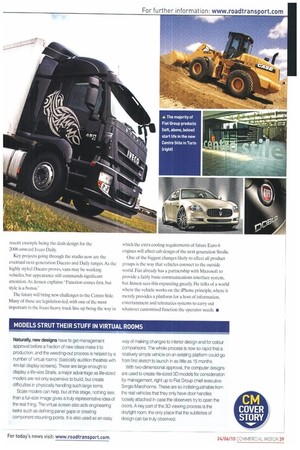MODELS STRUT THEIR STUFF IN VIRTUAL ROOMS
Page 55

If you've noticed an error in this article please click here to report it so we can fix it.
Naturally, new designs have to get management approval before a fraction of new ideas make it to production, and the weeding-out process is helped by a number of Virtual rooms' (basically audition theatres with 4m-tall display screens). These are large enough to display a life-size Stalls, a major advantage as life-sized models are not only expensive to build, but create difficulties in physicaily handling such large items.
Scale models can help, but at this stage, nothing less than a full-size image gives a truly representative idea of the real thing. The virtual screen also aids engineering tasks such as defining panel gaps or creating component mounting points. It is also used as an easy way of making changes to interior design and for colour comparisons. The whole process is now so rapid that a relatively simple vehicle on an existing platform could go from first sketch to launch in as little as 15 months.
With two-dimensional approval, the computer designs are used to create life-sized 3D models for consideration by management, right up to Fiat Group chief executive Sergio Marchionne. These are so indistinguishable from the real vehicles that they only have door handles loosely attached in case the observers try to open the doors. A key part of the 3D viewing process is the daylight room, the only place that the subtleties of design can be truly observed.












































































































































